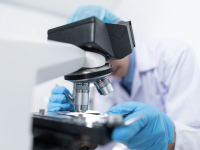Stroke happens when your blood vessel is obstructed, which is often happen just outside the brain. However, in some cases, stroke can also happen in blood vessels, inside the brain. There are things that elevate the risk of stroke, such as family members who had stroke, obesity, prolonged uses of contraceptives, lack of exercise, smoking, high level of serum cholesterol, heart enlargement, postural hypertension, diabetes, rheumatic heart diseases, arrhythmia, kidney problems, hypertension, atherosclerosis and previous transient ischemic attacks. Oral contraceptives also increase the risks of stroke, which can put women at slight disadvantage. Among younger patients, cocaine may induce ischemic stroke.
The risks of stroke increase significantly when you are above 30 and about 95 percent of stroke cases happen among people who are 45 years or older, while about 66 percent of stroke cases, happen among people above 65 years old. In general, men have greater risks of having stroke, but women start to catch up about five years after their menopause. Stroke is relatively uncommon among children, but it can be caused by various factors, such as thrombophilia, intracranial vessels genetic disorder and congenital heart diseases. There are major causes of stroke. Among older people, thrombosis is a more common condition, especially because they already have hypertension, diabetes and arterial plaque.
However, the risks of thrombosis are higher among people who have open heart surgery, cardiac arrhythmia, endocarditis and rheumatic heart disease. Embolism is another common cause of stroke, which can happen when the normal flow of blood inside the vessel is blocked by clotted blood, fat, tumor or trapped air. Embolism happens quickly and may without warning. This may cause swelling and followed by tissue death. Haemorrhage is also a common kind of stroke, which more likely to happen among women and it can happen at any age. It can be caused by aneurysm, which is followed by ruptured cerebral artery, which may happen suddenly. Chronic hypertension may also cause haemorrhage.
Because stroke happens very suddenly, you should quickly understand the symptoms to ensure quick treatment can be provided. As an example, people who have stroke may have loss of motor and sensory function. Visible symptoms are severe headache, inability to speak and changes in vision. When stroke happens on the right side of your brain, the left part of your body will be affected, vice versa. If the middle cerebral artery is affected, you may have reduced field of vision, difficult of speaking, problems swallowing and partial paralysis. When the carotid artery is affected, you will have numbness, paralysis, weakness, altered levels of consciousness and drooping eyelids.
When the vertebrobasilar artery is affected, you will have double vision, slurred speech, difficulty swallowing, numbness around your lips and overall weakness. Blockage in anterior cerebral artery will cause numbness, weakness, confusion, loss of coordination, incontinence and impaired sensory functions. Blocked posterior cerebral artery will cause coma, visual field reduction, sensory impairment and cortical blindness. When it happens, quick treatment needs to be performed to ensure that the blockage can be removed as soon as possible.


















